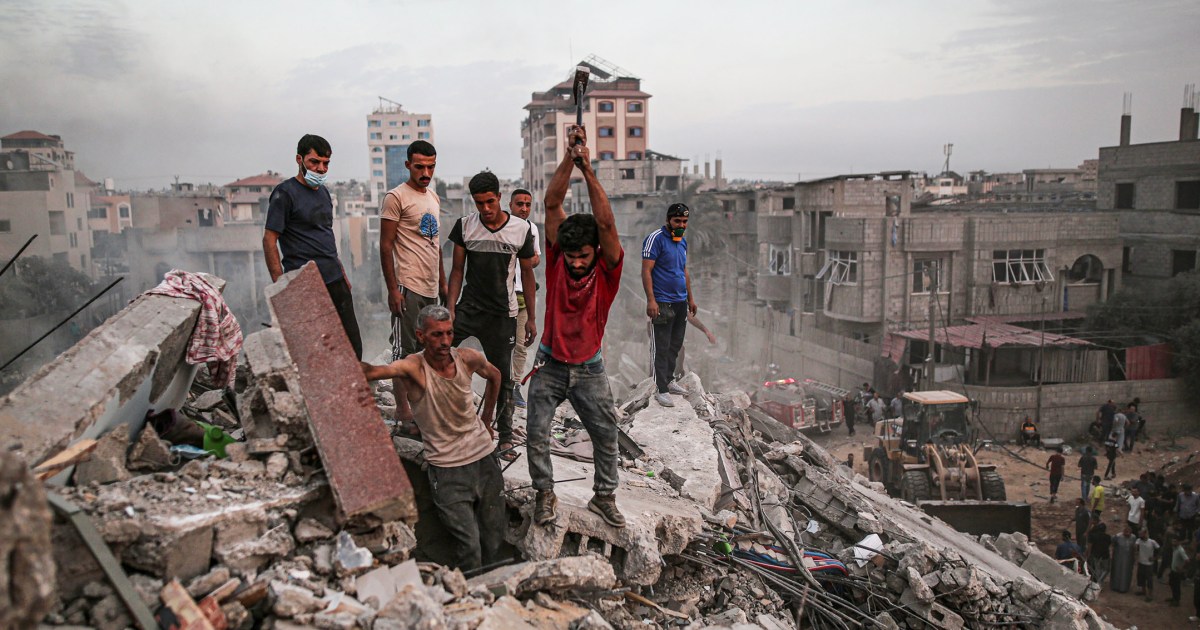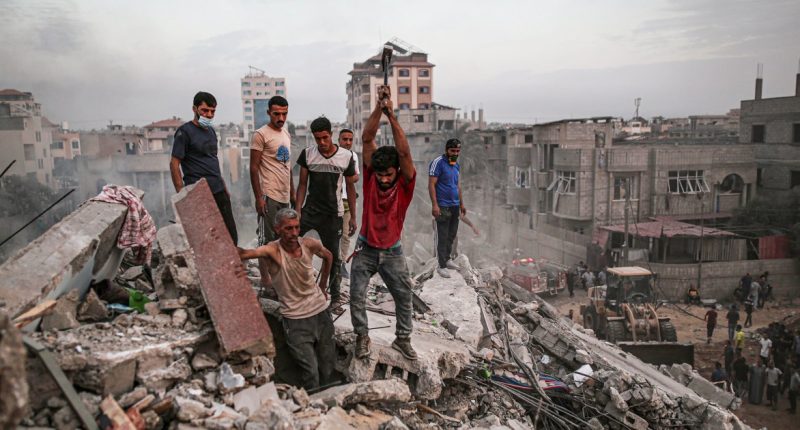
Before early October, Motaz Azaiza’s Instagram account documented life in Gaza to about 25,000 followers with a mix of daily life and the ongoing hostilities between Israel and Hamas.
That began to change in the days after Hamas’ terrorist attack on Israel and the retaliation on Gaza. Since then, more than 12.4 million people have begun following Azaiza’s feed, which has become a daily chronicle of Israeli strikes.
Many other journalists, digital creators and people active on social media based in the region have seen a similar uptick in followers. Plestia Alaqad, a journalist whose work has been featured by NBC News, has gained more than 2.1 million, according to the social media analytics company Social Blade. Mohammed Aborjela, a digital creator, gained 230,000. Journalist Hind Khoudary drew 273,000 in the last five days of October. Photographer and videographer Ali Jadallah added more than 1.1 million.
Those surges have made Instagram, an app generally associated with lighthearted social media posts and lifestyle influencers, a suddenly crucial view into Gaza. The app has previously been embraced by some journalists, most notably photojournalists, but the sudden increase in followers appears to have no precedent.
The posts can at times be difficult to absorb. Most if not all appear to be firsthand videos rather than recycled content: People pulled from rubble, children crying over the bodies of their parents, and to-camera accounts of what the journalists are seeing and feeling.
The unfiltered coverage, as seen in the Instagram post below, adds a unique element to the broader journalistic efforts to capture what’s happening in Gaza.
It’s a role that Instagram may not fully embrace (parent company Meta has broadly moved away from the news), but it appears the company is doing little to discourage the growth of the accounts. The app has rules against graphic content but does make exceptions for posts that are “newsworthy and in the public interest.” Some posts are initially covered by a “sensitive content” warning.
Instagram and other social media apps have come under some scrutiny over concerns that pro-Palestinian voices have been censored or suppressed. Meta confirmed in October that the company had accidentally limited the reach of some posts but said the problem was a bug that did not apply to one specific type of content and denied any censorship.
Meta also worked with the people behind the account Eye on Palestine after the company said it had detected a possible hacking attempt. That account had already been among the most-followed accounts focused on Palestinians before the war, with about 3.5 million followers. The account is back online after a multiday outage and now has more than 7 million.
The emergence of Instagram also comes as the social media platform X, once the go-to destination for journalists and witnesses to breaking news, has come under fire for its shortcomings around misinformation related to the conflict. Telegram is also a popular app for unfiltered updates but has a relatively small user base in the U.S.
A Meta spokesperson declined to make anyone from Instagram available for an interview.
Foreign journalists covering the Israel-Hamas war are facing enormous challenges obtaining firsthand information, and that dynamic is having a deep effect on the world’s understanding of what’s happening especially in Gaza, according to organizations that monitor press freedom.
The obstacles for reporters are wide-ranging even for a war zone. These include physical danger to journalists, lack of access to Gaza itself and the logistical challenges of operating within Gaza such as electricity and internet blackouts.
Many major media operations including NBC News have sent reporters to Israel to cover Hamas’ attack and the ongoing conflict, during which more than 1,400 people in Israel have been killed and more than 200 have been taken hostage, according to Israeli authorities. More than 9,000 people have died in Gaza from the Israeli counteroffensive, according to Gaza’s Ministry of Health.
Few foreign reporters are believed to be in Gaza, according to journalists outside the territory. Israel and Egypt control entry to Gaza and have not allowed in foreign journalists, according to a petition this week signed by nearly 100 French journalists demanding access to the strip, France 24 reported Tuesday.
Marc Owen Jones, an assistant professor of Middle East studies at Hamad Bin Khalifa University in Qatar who closely follows social media, said the accounts are important “precisely because of the chaotic and toxic information environment that is so heavily mediated and sanitised.”
“It is so hard for anyone to get into Gaza that these journalists using Instagram are one of the only windows into bearing witness,” he said in a text message.
Those challenges were most apparent last Friday when a near-total communications blackout and Israeli bombing made it almost impossible to tell what was happening in Gaza. Also Friday, Reuters reported that Israel’s military had told international news organizations that it could not guarantee the safety of their journalists operating in Gaza.
As communication systems were gradually restored, voices from Gaza began to cut through the silence on social media.
A video of Khoudary and Azaiza uploaded on Saturday served as a sort of public service announcement confirming they were alive. Many commenters expressed their concern, worried that their lack of posts meant they had been hurt or killed. Neither responded to interview requests.
They both said they were struggling to get in touch with family members in other parts of the Gaza Strip.
“We don’t know where our families are and we don’t know if they’re ok and we really need to know what they’re going through because yesterday was a very bad night,” Khoudary said. “It was one of the deadliest nights on the Gaza strip.”
More than 30 journalists and media workers have died in the conflict as of Tuesday, according to the Committee to Protect Journalists, a press freedom organization based in New York. Another nine journalists were reported missing or detained, it said.
Sherif Mansour, the Middle East and North Africa program coordinator at the Committee to Protect Journalists, said any journalist working in Gaza is in danger.
“In a way, the people who are needed the most are the ones who are most vulnerable right now,” Mansour, who is based in the U.S., said in a phone interview.
He said that Hamas has contributed to the censorship of journalists within Gaza including through harassment.
“It’s basically hard to get by or be able to do work, but there has always been enough people trying to tell the story,” he said.
A regular stream of videos and images has made it out of Gaza, but the spread of misinformation and unverified claims — often in the form of legitimate content that is old or inaccurately described — has added to the challenge of verifying information from the region. On Instagram, many of the Palestinian journalists are verified, which means Instagram confirmed the identity of the person behind the account.
Jones noted that declining trust in the media has pushed some people to seek information directly from firsthand sources.
“They are also providing unfiltered coverage that has a raw and authentic quality, and the current distrust of the mainstream media is not helped by the more sanitised (for understandable reasons) content,” he wrote.
Source: | This article originally belongs to Nbcnews.com










